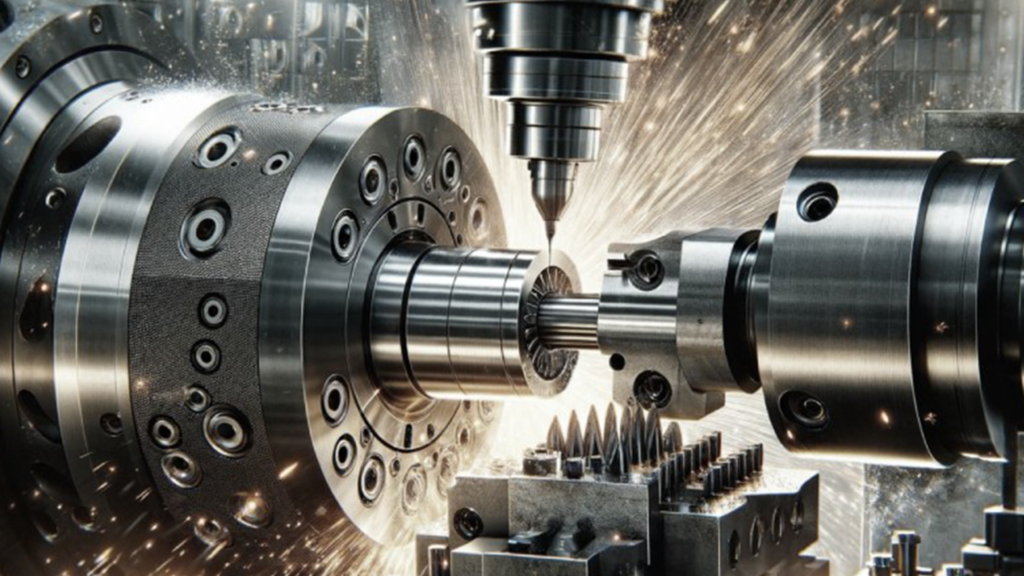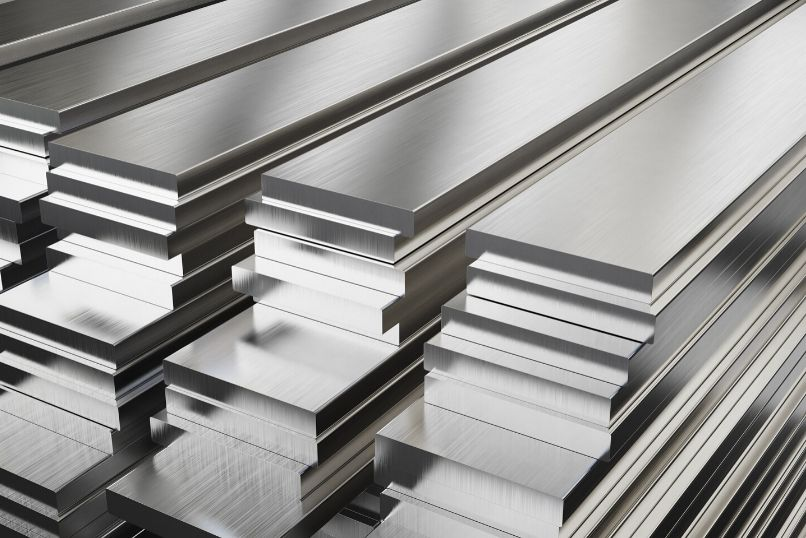CNC machining processes can produce precision parts and components with tight tolerances of ±0.025 mm and fine detail. However, parts made with CNC mills often have visible marks. Therefore, surface treatment is a core part of the manufacturing process as it helps improve the aesthetics, corrosion resistance and wear resistance of different CNC machined metal parts.
When applied properly, surface treatments can improve the physical properties and functionality of machined parts. Since different types of CNC machined finishes have different procedures and results, it is important to understand the basics of these finishes to determine which one best meets the requirements of your intended application. Let’s get started!
▼ Why do machined parts need surface treatment?
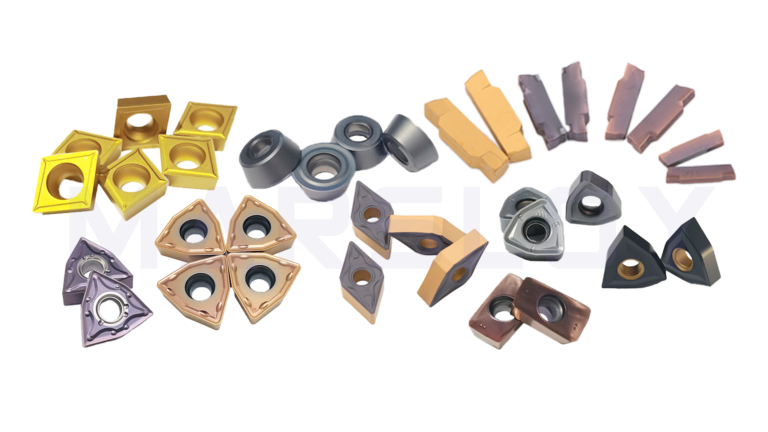
CNC machining processes, including milling and turning, often leave visible cut marks that affect the surface quality of machined parts. Although CNC machining provides precision parts, these machined parts require surface preparation for a variety of reasons.
Why surface finishing is critical for CNC machined metal parts:
Improve appearance
Surface treatments such as grinding, polishing, plating, or painting can help mask the sharp edges and machining marks left by the CNC machining process. Therefore, these surface treatments make CNC machined parts more visually appealing.
Enhanced corrosion resistance
Most CNC machined materials are susceptible to corrosive substances. Therefore, product designers often use surface treatments such as anodizing, polishing and passivation to protect the surface of machined parts to ensure a prolonged service life.
Improve cleaning and hygiene standards
Product manufacturers apply different surface treatments to CNC machined parts to ensure they are easy to clean and maintain. Additionally, this is critical in hygiene-critical applications such as food processing equipment and medical equipment.
Functional performance
Manufacturers use different CNC machined surface treatments to improve material properties (such as electrical conductivity), reduce friction, and add other desired properties to optimize its functional performance.
custom made
Select the desired machined part surface finish and you can customize it to your specific preferences and requirements. You can achieve different finishes to achieve a range of surface properties, textures or colors.
▼ Common surface treatment types
Different surface treatments are suitable for different CNC machining materials, and each material has different surface roughness values. However, it is crucial to select the surface treatment that best ensures optimal performance, functionality, durability and visual appeal of the machined part.
The following are the types of surface treatments commonly used on metal CNC machined parts:
1. Polishing
Polishing is a typical mechanical finishing process that uses chemicals or abrasives to create a high-gloss, mirror-like surface on metal parts. This finishing process enhances the physical properties of metal machined parts, increases corrosion resistance, improves cleanliness and reduces friction.
The polishing method is ideal for metals such as aluminum, stainless steel, and brass. Polishing is widely used by product designers and manufacturers in the food processing, medical and luxury goods industries for its practicality and aesthetics.
Although polishing can give a metal part a smooth, reflective surface that improves its visual appeal, the process can be time-consuming and labor-intensive. This is especially true for machined parts that require extremely high finishes or complex geometries.
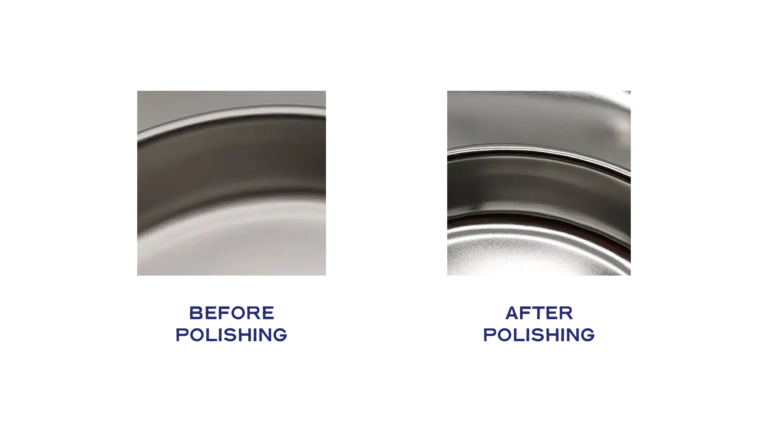
2. Sandblasting
Sandblasting is a commonly used mechanical finishing technique for metal materials. It involves blasting the surface of a part with small glass beads using a pressurized air gun to improve its appearance. It is a versatile finishing treatment suitable for different materials, including metals and plastics.
Sandblasting creates a smoother surface on CNC machined parts with a consistent matte or satin finish and lightweight texture, removing visible knife marks, burrs and other imperfections. Sandblasting is typically applied to machined parts in a closed chamber. However, be sure to cover critical features or surfaces, including holes, to prevent dimensional changes.
What’s more, sandblasting is more focused on improving the aesthetics of the product than on functionality. Since sandblasting is a manual process, the skill of the operator often determines the results of this finishing treatment. Typical parameters for this method include glass bead size and air pressure. Like sandpaper, glass beads come in a variety of sizes and grades, from very fine to very coarse.
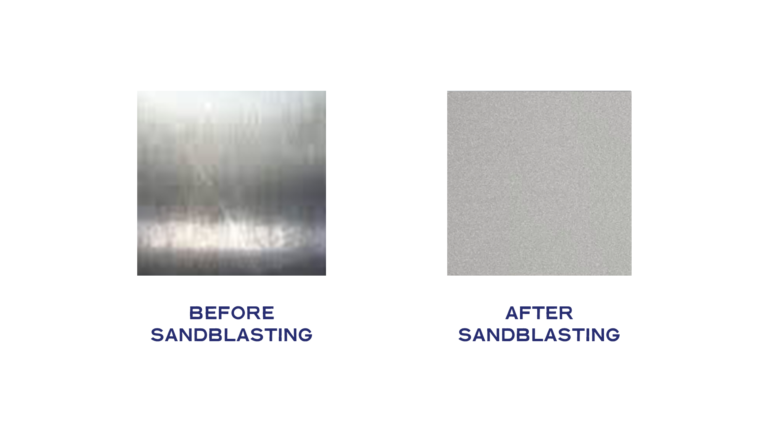
3. Anodizing
Anodizing forms a protective oxide layer on the surface of the machined metal part. This protective coating protects metal component surfaces from corrosion and wear. Anodic coatings are compatible with different colors. It is non-conductive and hard (Type III). Anodizing is ideal for forming corrosion-resistant coatings on machined aluminum and titanium parts.
To anodize a CNC metal part, immerse it in a dilute sulfuric acid solution and apply a voltage between it and the cathode. An electrochemical reaction occurs on the exposed surface of the machined part, converting it into hard titanium or aluminum oxide. However, remember to mask surfaces with critical features or dimensions, such as threaded holes, that must remain conductive when anodizing.
Anodized parts can come in a variety of colors before being sealed, such as gold, red, black or blue. Additionally, you can achieve different thicknesses and densities of anodized metal parts by varying the anodization time, consistency, and anodization duration. However, there are three variations of anodizing, each with different processes, coating thicknesses, and properties. Here are the variations:
- Type I (Chromic acid anodizing):This is the thinnest layer and does not change the dimensions of the machined part. This type of anodization looks grayer and does not accept other colors.
- Type II (Boric acid anodizing):This is a safer type of anodization that allows for the addition of a variety of colors to machined parts due to better paint adhesion. It is called decorative or standard anodizing and can produce coatings up to 25 µm thick.
- Type III (Hard sulfuric acid anodizing):This is the most commonly used type of anodization, especially for aluminum and titanium alloys. It offers the clearest surface, making it compatible with the widest range of colors. Type III anodizes the surface slightly thicker than Type II, with coating thickness ranging from 0.001 to 0.004 inches. Combining Type III with PTFE/Teflon creates a dry lubricated surface.
Additionally, Type III anodization is not suitable for certain applications because its thicker coating can cause the workpiece to become brittle, leading to chipping or cracking under severe stress. Therefore, it is important to consider the application before choosing between Type II and Type IIII anodization.
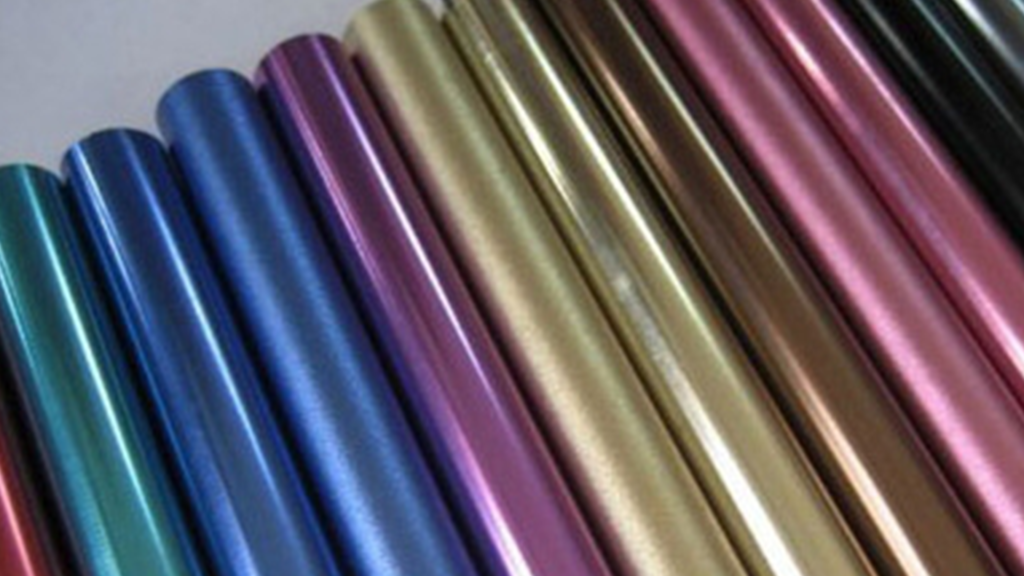
4. Alodine
Alodine or chem film is the brand name for chromate conversion coating. This chemical surface treatment involves dipping machined parts into a chemical made from a proprietary formula that contains chromium as the main ingredient. When requesting Alodine for your metal CNC machined parts, make sure the process complies with MIL-DTL-5541F standards. It represents a U.S. military specification chemical conversion coating for aluminum and aluminum alloys.
Alodine’s protective coating acts as a corrosion inhibitor. What’s more, you can use it with decorative finishes as it improves adhesion to paints and adhesives. Unlike other finishes that inhibit the thermal and electrical conductivity of machined aluminum parts, Alodine enhances the electrical conductivity of aluminum parts. This finish is cheaper and the coating is prone to scratches and surface damage.
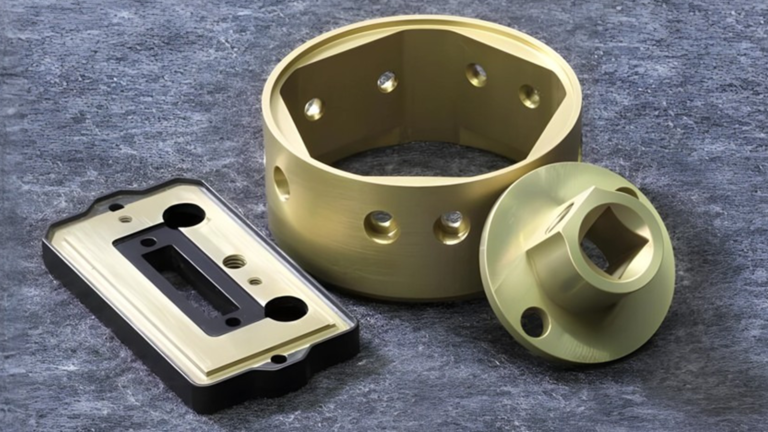
5. Powder coating
This is an electrostatic process that uses dry powder to form a thin, uniform protective layer on the surface of CNC machined parts. The powder coating process is compatible with all metals. Additionally, powder coating CNC machined parts helps increase their strength, corrosion resistance, and wear resistance.
Unlike anodized parts, powder-coated parts have higher impact resistance and are compatible with a variety of colors. Powder coating can be performed in conjunction with sandblasting to produce machined parts with uniformly smooth surfaces and excellent corrosion resistance. The powders used in this process can be thermoset or thermoplastic polymers.
Although powder coating is similar to spray painting, it involves applying a dry powder to a metal surface and curing it in an oven. You must prime the machined parts with an optional chromium or phosphate coating to increase their corrosion resistance. The parts are then coated with dry powder using an electrostatic spray gun and cured in an oven at 200ºC. However, you can apply multiple layers to achieve the desired coating thickness, ranging from 18 µm to 72 µm.

6. Plating
Electroplating is a finishing process that involves depositing a metallic coating on a machined metal part to increase its thickness. Applying this surface treatment to CNC machined parts protects their surfaces from corrosion, impact, heat and rust and makes them durable. This process works best with chromium, cadmium, tin, copper, nickel and gold. Electroplating CNC machined parts helps improve adhesion between the base material and its additional exterior coating. However, you can make machined parts magnetic or conductive depending on the metal plated on the substrate.
Unlike other surface treatments in CNC machining, electroplating is not environmentally friendly as it produces hazardous waste. Therefore, severe contamination may occur if not handled properly. Additionally, electroplating is time-consuming and relatively expensive due to the equipment, metals, and chemicals required, especially when the metal part requires multiple layers.
7. Passivation
Passivation protects the surface of ferrous materials such as steel and stainless steel from corrosion or rust, ensuring improved appearance, performance and cleanliness. This chemical treatment involves immersing the machined metal parts in an acidic solution such as nitric or citric acid to remove iron from the surface, resulting in a smooth, polished surface.
Since passivation is not a coating, it does not require masking and does not increase the thickness of the machined part. The acidic bath removes traces of iron and rust from the surface of the component, forming a coating consisting of chromium or nickel on the surface of the metal component. Although nitric acid is the traditional passivation choice, citric acid baths have become a widely accepted choice due to their shorter cycle times.
Passivated parts are rust-resistant and ideal for outdoor applications. What’s more, passivation is a common surface treatment method in a variety of industries, from the aerospace industry, which requires high-quality steel and the tightest dimensional tolerances, to the medical industry, where product sterilization and longevity are critical.
However, passivating machined parts can increase part production time because these machined metal parts must undergo pretreatment, such as cleaning to remove debris, grease, or other contaminants. While soaking is the most commonly used passivation technique due to its faster cycle time and greater consistency, acid spray is a better option.
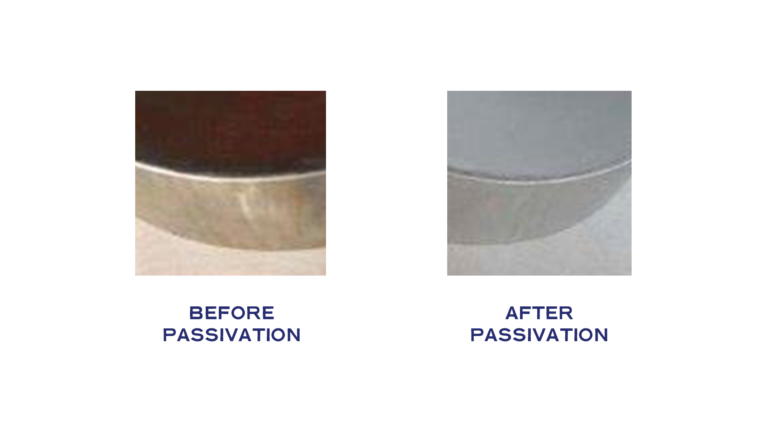
8. Electroless nickel plating
The electroless nickel plating process involves forming a protective layer of nickel alloy on CNC machined parts to improve their corrosion resistance. It uses a nickel bath and a chemical reducing agent (such as sodium hypophosphite) to deposit a layer of nickel alloy (usually nickel phosphorus) on the metal part. The process uniformly adds a nickel alloy coating to complex parts with complex features such as holes and slots. There are several types of electroless nickel plating, each with varying amounts of phosphorus. These include low phosphorus, medium phosphorus and high phosphorus nickel.
Parts plated with nickel typically have excellent hardness and wear resistance. Additionally, you can make them harder by heat treating them. The electroless nickel plating process is suitable for treating different metals, including stainless steel, aluminum and steel. While this method offers tremendous advantages, it has certain limitations, including subsequent reduction in plating rate, growth of contaminants in the nickel bath, and elevated phosphorus content. Additionally, electroless nickel plating is less suitable for rough, uneven, or poorly machined surfaces.
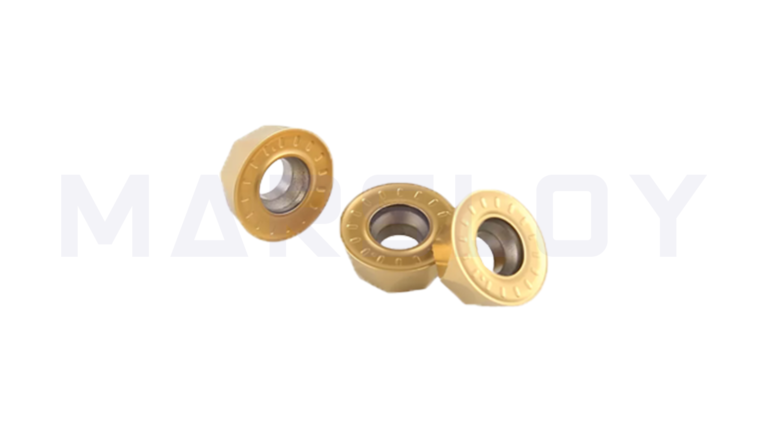
Metal CNC machined parts can come with any surface treatment to ensure they meet your project needs. In this article we discuss the most common surface treatments for metal CNC parts, each with its own unique advantages and disadvantages. Hopefully, now that you understand how surfacing works and what the results are, you can determine which finish is right for the specific application you want.

